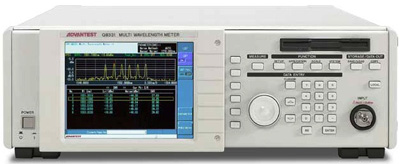
|
|
The Advantest Q8331 Multi Wavelength Meter uses a He-Ne laser as wavelength reference enables high accuracy measurements of up to ±1 ppm ±1.5 pm at 1550 nm). In addition, since the He-Ne laser oscillates with very high stability, ±1 ppm measurement accuracy is guaranteed over a long time period without recalibration. The Q8331 can measure wavelengths at a sampling speed of 2 measurements per second so that wavelength fluctuations caused by temperature variations can be captured precisely. The Michelson interference method allows for measurements with high resolution of up to 0.1 pm/10 MHz. The Q8331 includes a temperature and atmospheric pressure sensor, that allow it to automatically adjust measurements to changes in temperature and atmospheric pressure. The Q8331 can be switched to display optical frequency or wavelength. This is convenient for adjusting input wavelengths to the ITU-T grid. Since the deviation is displayed with reference to the keyed user entry, wavelength fluctuations of the input optical signals caused by temperature variations can be viewed with high resolution and high precision. Specifications. Wavelength Measurement range: 1270 to 1680 nm. Wavelength Accuracy: ±1 ppm (1.5 pm at 1550 nm). Resolvable separation: 10 GHz (High resolution mode), 20 GHz (Normal resolution mode). Display resolution: 0.1 pm. Power level Accuracy: ±0.5 dB (1310 nm, 1550nm). Linearity: ±0.3 dB (-30 dBm or more, 1550 nm). Flatness: ±0.2 dB (1520 to 1600 nm). Sensibility: -40 dBm (1270 to 1600 nm), -30 dBm (1600 to 1680 nm). Maximum input power: +10 dBm (Total input lines). Polarization dependency: ±0.3 dB (1270 to 1600 nm). Display resolution: 0.01 dB. Number of input lines: Max. 300. Measurement time: 0.5 sec (Normal resolution mode), 1 sec (High resolution mode). I/O Interface: GPIB.
|